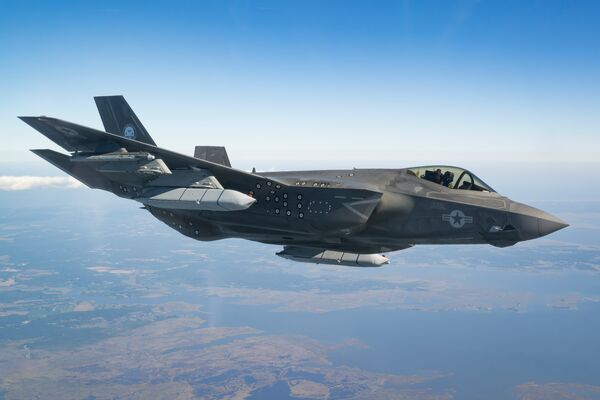
A US Navy F-35C carries two LRASMs on 10 September 2024. (US Navy)
The Lockheed Martin AGM-158C Long-Range Anti-Ship Missile (LRASM) has begun flight-testing aboard a US Navy (USN) Lockheed Martin F-35C, photographs released by the service show.
A photograph released by the navy on 24 September, taken on 10 September, shows an F-35C test aircraft with two LRASMs carried externally on either wing. The F-35C, flying from the navy's primary aviation test site at Naval Air Station (NAS) Patuxent River, Maryland, conducted captive carry testing for two days “to evaluate flutter, loads, and flying qualities”, according to the navy.
Integrating LRASM onto the F-35 has long been a goal for both the USN and Lockheed Martin. A solicitation to integrate the missile and platform was released in 2023, and artists' renditions of F-35s carrying LRASMs were a staple of Lockheed Martin airshow displays.
The AGM-158C is the US Department of Defense's (DoD's) primary anti-ship weapon and can strike targets up to 926 km (575 miles) away. The missile equips the USN's Boeing F/A-18E/F Super Hornet fleet, fulfilling the Offensive Anti-Surface Warfare (OASuW) Increment 1 requirement. Increment 2 is the subject of an ongoing contest intended to result in a hypersonic weapon.
Although the USN administers the US Marine Corps' fleet of vertical take-off F-35Bs, it is not immediately clear whether LRASM will be integrated with the F-35B or the US Air Force's (USAF's) F-35A. The USAF purchased Kongsberg Joint Strike Missiles (JSMs) in May to give their F-35As anti-ship capability, and has no formal requirement to equip them with LRASMs; the JSM is a smaller munition, and although it cannot fly as far as LRASM, it can fit inside an F-35's internal weapons bays.
Looking to read the full article?
Gain unlimited access to Janes news and more...







